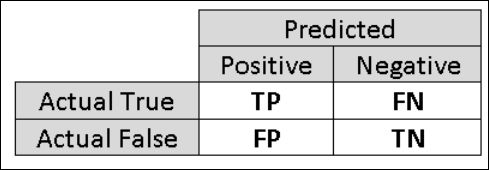Download Microsoft Azure AI Fundamentals.AI-900.NewDumps.2021-07-28.73q.vcex
| Vendor: | Microsoft |
| Exam Code: | AI-900 |
| Exam Name: | Microsoft Azure AI Fundamentals |
| Date: | Jul 28, 2021 |
| File Size: | 4 MB |
| Downloads: | 11 |
How to open VCEX files?
Files with VCEX extension can be opened by ProfExam Simulator.
Discount: 20%
Demo Questions
Question 1
A company employs a team of customer service agents to provide telephone and email support to customers.
The company develops a webchat bot to provide automated answers to common customer queries.
Which business benefit should the company expect as a result of creating the webchat bot solution?
- increased sales
- a reduced workload for the customer service agents
- improved product reliability
Correct answer: B
Question 2
For a machine learning progress, how should you split data for training and evaluation?
- Use features for training and labels for evaluation.
- Randomly split the data into rows for training and rows for evaluation.
- Use labels for training and features for evaluation.
- Randomly split the data into columns for training and columns for evaluation.
Correct answer: D
Question 3
You are developing a model to predict events by using classification.
You have a confusion matrix for the model scored on test data as shown in the following exhibit.

Use the drop-down menus to select the answer choice that completes each statement based on the information presented in the graphic.
NOTE: Each correct selection is worth one point.
Correct answer: To work with this question, an Exam Simulator is required.
Explanation:
Box 1: 11 - TP = True Positive. The class labels in the training set can take on only two possible values, which we usually refer to as positive or negative. The positive and negative instances that a classifier predicts correctly are called true positives (TP) and true negatives (TN), respectively. Similarly, the incorrectly classified instances are called false positives (FP) and false negatives (FN). Box 2: 1,033 - FN = False Negative - Reference: https://docs.microsoft.com/en-us/azure/machine-learning/studio/evaluate-model-performance Box 1: 11 -

TP = True Positive.
The class labels in the training set can take on only two possible values, which we usually refer to as positive or negative.
The positive and negative instances that a classifier predicts correctly are called true positives (TP) and true negatives (TN), respectively.
Similarly, the incorrectly classified instances are called false positives (FP) and false negatives (FN).
Box 2: 1,033 -
FN = False Negative -
Reference:
https://docs.microsoft.com/en-us/azure/machine-learning/studio/evaluate-model-performance
Question 4
You build a machine learning model by using the automated machine learning user interface (UI).
You need to ensure that the model meets the Microsoft transparency principle for responsible AI.
What should you do?
- Set Validation type to Auto.
- Enable Explain best model.
- Set Primary metric to accuracy.
- Set Max concurrent iterations to 0.
Correct answer: B
Question 5
For each of the following statements, select Yes if the statement is true. Otherwise, select No.
NOTE: Each correct selection is worth one point.
Correct answer: To work with this question, an Exam Simulator is required.
Explanation:
Anomaly detection encompasses many important tasks in machine learning: Identifying transactions that are potentially fraudulent. Learning patterns that indicate that a network intrusion has occurred. Finding abnormal clusters of patients. Checking values entered into a system. Reference: https://docs.microsoft.com/en-us/azure/machine-learning/studio-module-reference/anomaly-detection Anomaly detection encompasses many important tasks in machine learning:
Identifying transactions that are potentially fraudulent.
Learning patterns that indicate that a network intrusion has occurred.
Finding abnormal clusters of patients.
Checking values entered into a system.
Reference:
https://docs.microsoft.com/en-us/azure/machine-learning/studio-module-reference/anomaly-detection
Question 6
To complete the sentence, select the appropriate option in the answer area.
Correct answer: To work with this question, an Exam Simulator is required.
Explanation:
Privacy and security. As AI becomes more prevalent, protecting privacy and securing important personal and business information is becoming more critical and complex. With AI, privacy and data security issues require especially close attention because access to data is essential for AI systems to make accurate and informed predictions and decisions about people. AI systems must comply with privacy laws that require transparency about the collection, use, and storage of data and mandate that consumers have appropriate controls to choose how their data is used. At Microsoft, we are continuing to research privacy and security breakthroughs (see next unit) and invest in robust compliance processes to ensure that data collected and used by our AI systems is handled responsibly. Reference: https://docs.microsoft.com/en-us/learn/modules/responsible-ai-principles/4-guiding-principles Privacy and security.
As AI becomes more prevalent, protecting privacy and securing important personal and business information is becoming more critical and complex. With AI, privacy and data security issues require especially close attention because access to data is essential for AI systems to make accurate and informed predictions and decisions about people. AI systems must comply with privacy laws that require transparency about the collection, use, and storage of data and mandate that consumers have appropriate controls to choose how their data is used. At Microsoft, we are continuing to research privacy and security breakthroughs (see next unit) and invest in robust compliance processes to ensure that data collected and used by our AI systems is handled responsibly.
Reference:
https://docs.microsoft.com/en-us/learn/modules/responsible-ai-principles/4-guiding-principles
Question 7
Match the types of AI workloads to the appropriate scenarios.
To answer, drag the appropriate workload type from the column on the left to its scenario on the right.
Each workload type may be used once, more than once, or not at all.
NOTE: Each correct selection is worth one point.
Correct answer: To work with this question, an Exam Simulator is required.
Explanation:
Box 3: Natural language processing Natural language processing (NLP) is used for tasks such as sentiment analysis, topic detection, language detection, key phrase extraction, and document categorization. Reference: https://docs.microsoft.com/en-us/azure/architecture/data-guide/technology-choices/natural-language-processing Box 3: Natural language processing
Natural language processing (NLP) is used for tasks such as sentiment analysis, topic detection, language detection, key phrase extraction, and document categorization.
Reference:
https://docs.microsoft.com/en-us/azure/architecture/data-guide/technology-choices/natural-language-processing
Question 8
You are designing an AI system that empowers everyone, including people who have hearing, visual, and other impairments.
This is an example of which Microsoft guiding principle for responsible AI?
- fairness
- inclusiveness
- reliability and safety
- accountability
Correct answer: B
Question 9
Match the Microsoft guiding principles for responsible AI to the appropriate descriptions.
To answer, drag the appropriate principle from the column on the left to its description on the right. Each principle may be used once, more than once, or not at all.
NOTE: Each correct selection is worth one point.
Correct answer: To work with this question, an Exam Simulator is required.
Explanation:
Box 1: Reliability and safety - To build trust, it's critical that AI systems operate reliably, safely, and consistently under normal circumstances and in unexpected conditions. These systems should be able to operate as they were originally designed, respond safely to unanticipated conditions, and resist harmful manipulation. Box 2: Fairness - Fairness: AI systems should treat everyone fairly and avoid affecting similarly situated groups of people in different ways. For example, when AI systems provide guidance on medical treatment, loan applications, or employment, they should make the same recommendations to everyone with similar symptoms, financial circumstances, or professional qualifications. We believe that mitigating bias starts with people understanding the implications and limitations of AI predictions and recommendations. Ultimately, people should supplement AI decisions with sound human judgment and be held accountable for consequential decisions that affect others. Box 3: Privacy and security - As AI becomes more prevalent, protecting privacy and securing important personal and business information is becoming more critical and complex. With AI, privacy and data security issues require especially close attention because access to data is essential for AI systems to make accurate and informed predictions and decisions about people. AI systems must comply with privacy laws that require transparency about the collection, use, and storage of data and mandate that consumers have appropriate controls to choose how their data is used Reference: https://docs.microsoft.com/en-us/learn/modules/responsible-ai-principles/4-guiding-principles Box 1: Reliability and safety -
To build trust, it's critical that AI systems operate reliably, safely, and consistently under normal circumstances and in unexpected conditions. These systems should be able to operate as they were originally designed, respond safely to unanticipated conditions, and resist harmful manipulation.
Box 2: Fairness -
Fairness: AI systems should treat everyone fairly and avoid affecting similarly situated groups of people in different ways. For example, when AI systems provide guidance on medical treatment, loan applications, or employment, they should make the same recommendations to everyone with similar symptoms, financial circumstances, or professional qualifications.
We believe that mitigating bias starts with people understanding the implications and limitations of AI predictions and recommendations. Ultimately, people should supplement AI decisions with sound human judgment and be held accountable for consequential decisions that affect others.
Box 3: Privacy and security -
As AI becomes more prevalent, protecting privacy and securing important personal and business information is becoming more critical and complex. With AI, privacy and data security issues require especially close attention because access to data is essential for AI systems to make accurate and informed predictions and decisions about people. AI systems must comply with privacy laws that require transparency about the collection, use, and storage of data and mandate that consumers have appropriate controls to choose how their data is used
Reference:
https://docs.microsoft.com/en-us/learn/modules/responsible-ai-principles/4-guiding-principles
Question 10
To complete the sentence, select the appropriate option in the answer area.
Correct answer: To work with this question, an Exam Simulator is required.
Explanation:
Reliability and safety: To build trust, it's critical that AI systems operate reliably, safely, and consistently under normal circumstances and in unexpected conditions. These systems should be able to operate as they were originally designed, respond safely to unanticipated conditions, and resist harmful manipulation. Reference: https://docs.microsoft.com/en-us/learn/modules/responsible-ai-principles/4-guiding-principles Reliability and safety:
To build trust, it's critical that AI systems operate reliably, safely, and consistently under normal circumstances and in unexpected conditions.
These systems should be able to operate as they were originally designed, respond safely to unanticipated conditions, and resist harmful manipulation.
Reference:
https://docs.microsoft.com/en-us/learn/modules/responsible-ai-principles/4-guiding-principles
HOW TO OPEN VCE FILES
Use VCE Exam Simulator to open VCE files

HOW TO OPEN VCEX AND EXAM FILES
Use ProfExam Simulator to open VCEX and EXAM files


ProfExam at a 20% markdown
You have the opportunity to purchase ProfExam at a 20% reduced price
Get Now!



